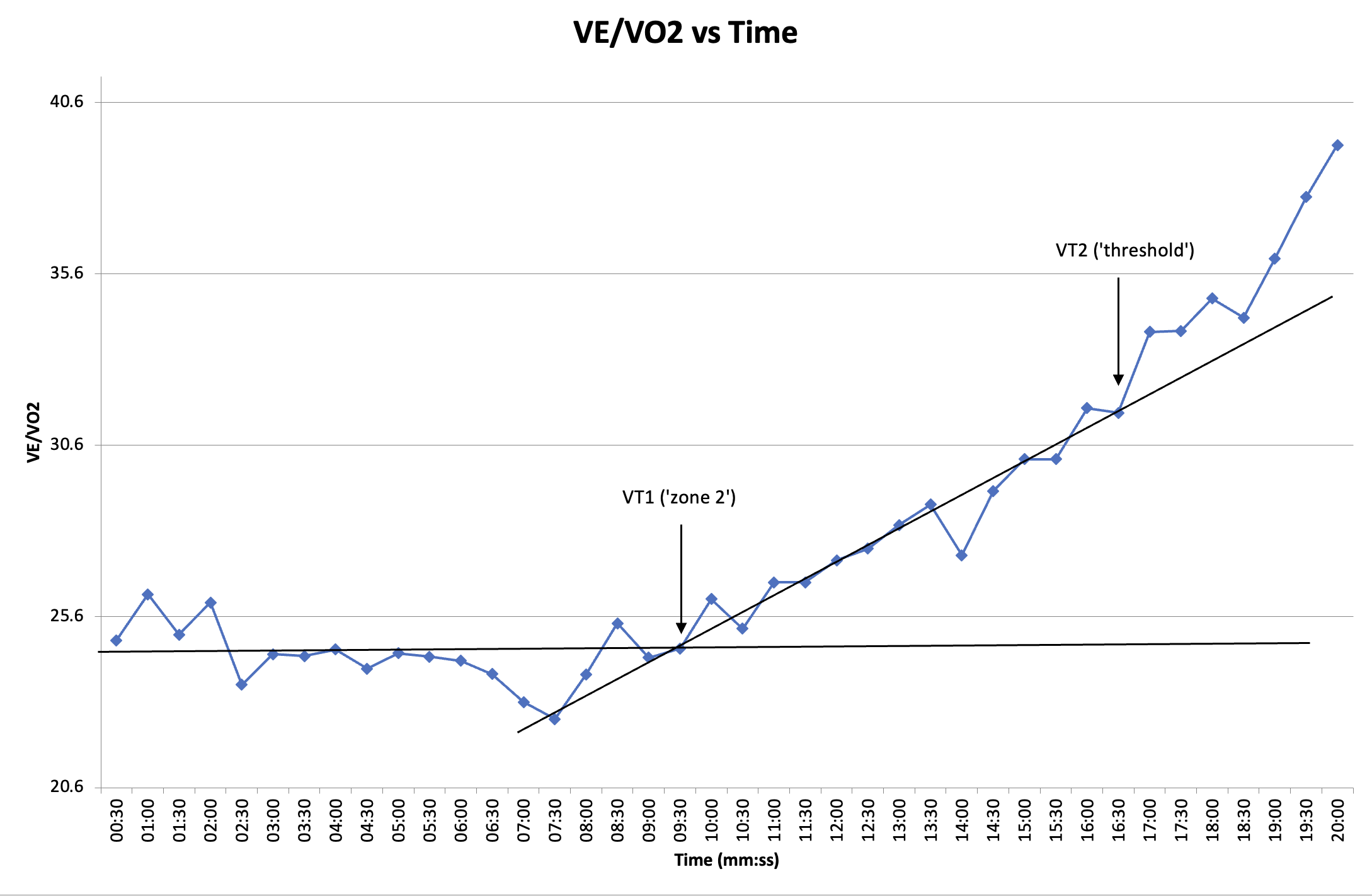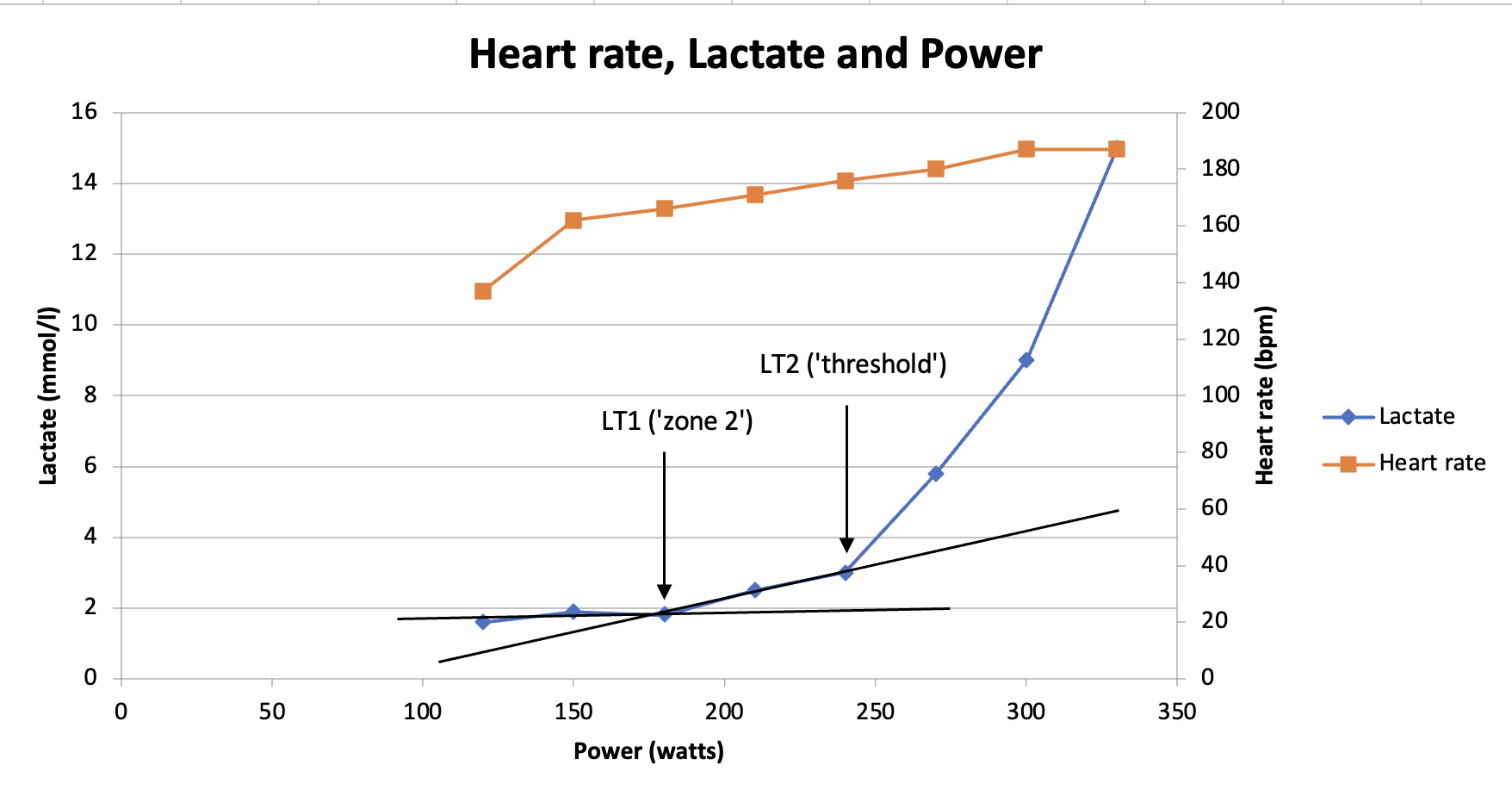When it comes to training efficiency, understanding your zones is essential. Zone 2 training, in particular, has gained popularity due to its benefits for endurance and metabolic health. To accurately determine Zone 2, many athletes and coaches rely on physiological markers such as the first ventilatory threshold (VT1) or lactate threshold 1 (LT1). Here's how you can measure Zone 2 based on VT1 or LT1 in a VO2 max test.
What is Zone 2?
Zone 2 is a low-intensity training zone where your body primarily uses fat for energy. It’s the sweet spot for building aerobic capacity, improving mitochondrial efficiency, and enhancing endurance. In practical terms, Zone 2 is often characterized by a pace or effort level that feels sustainable and conversational.
Understanding VT1 and LT1
VT1 (First Ventilatory Threshold): This occurs when breathing begins to noticeably increase due to a shift in energy systems, indicating that lactate levels in the blood are starting to rise slightly. However, the body can still clear lactate efficiently at this stage.
LT1 (Lactate Threshold 1): This marks the first point at which lactate levels begin to rise above resting levels, signalling the onset of blood lactate accumulation.
Both VT1 and LT1 are closely linked and are excellent markers for identifying Zone 2. They help define the intensity at which your body transitions from primarily aerobic energy production to a mix of aerobic and anaerobic energy systems.
Conducting a VO2 Max Test
A VO2 max test measures your body’s maximum oxygen consumption during exercise. While the test is designed to assess peak performance, it also provides valuable data for determining your VT1 or LT1.
Step-by-Step Process:
Preparation: Ensure you’re well-rested and properly hydrated. Avoid heavy meals and caffeine a few hours before the test.
Setup: The test is typically performed on a treadmill, stationary bike, or rowing ergometer. You’ll wear a mask to measure oxygen intake and carbon dioxide output, along with a heart rate monitor.
Incremental Intensity: The test begins at a low intensity, which gradually increases in stages. Each stage usually lasts 1-3 minutes.
Data Collection: As intensity increases, your breathing rate, ventilation, oxygen consumption, heart rate, and lactate levels are monitored. This data helps pinpoint VT1 and LT1.
Identifying VT1 or LT1:
VT1: Look for a noticeable change in breathing rhythm. This is often assessed by observing the respiratory exchange ratio (RER) or through identifying the first non-linear increase between ventilation and VO2.
LT1: Blood samples are taken during the test to measure lactate levels. LT1 is identified when lactate begins to rise above baseline.
Calculating Zone 2 Heart Rate Using VT1
As shown on the graph, VT1 occurs at the first non-linear increase in the ventilation-VO2 relationship (9:30). In other words, when you start to breathe heavier, but start extracting less oxygen per breath. The heart rate which correlates to this data point is the upper limit of your zone 2 heart rate.
Calculating Zone 2 Heart Rate Using LT1
As shown on the graph, LT1 occurs at the first increase in blood lactate above resting levels which occurs in the 3rd sample at 180 watts. The heart rate which correlates to this point is the upper limit of your zone 2 heart rate (approx 165 BPM in this example).
Both LT1 and VT1 occurred within 30 seconds of each other in these data sets, supporting that either or both of VT1 and LT1 are accurate measures of zone 2.
Applying the Results to Zone 2 Training
Once you’ve identified VT1 or LT1, you can define your Zone 2 training range. This range typically corresponds to a heart rate just below and up to VT1 or LT1.
Example: If your VT1 heart rate is 140 beats per minute (bpm), your Zone 2 range might fall between 120 and 140 bpm. In the example image above, this athlete has a naturally high heart rate and in fact has a zone 2 HR of just above 160 BPM. Generic equations found on the internet would have told him to hold significantly lower than this, resulting in suboptimal training adaptation.
Benefits of Using VT1 or LT1 for Zone 2
Precision: Provides an individualised approach to training rather than using generic HR equations which are inaccurate for most people.
Improvement: Helps you train at the correct intensity to maximise training adaptation.
Progress Tracking: Allows you to monitor improvements in aerobic fitness over time.
Conclusion
Measuring Zone 2 based on VT1 or LT1 in a VO2 max test ensures your training is scientifically grounded and highly effective. By leveraging these physiological markers, you can optimise your endurance, metabolic health, and overall performance. Whether you’re a recreational athlete or a seasoned competitor, understanding and training in Zone 2 can be a game-changer for your fitness journey. Measuring your VT1 or LT1 from either lactate testing or VO2 max testing is the only accurate way to measure your zone 2 heart rate. If you’re in Melbourne, Victoria, get in touch with us to accurately measure your zone 2 along with all the other training zones in a VO2 max & lactate test.


